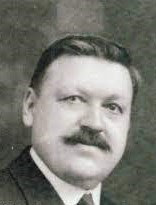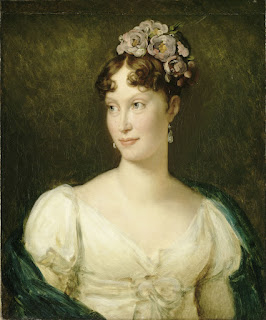NEW - Italo Marchioni - ice cream maker
Italian-American inventor of the waffle cone
Italo Marchioni, the ice cream manufacturer credited by many as the inventor of the ice cream cone, was born in the tiny mountain hamlet of Peaio in northern Veneto on this day in 1868. Marchioni learned his skills in Italy, where gelato was well established as a popular treat, but in common with so many Italians during what were tough economic times in the late 19th century he took the bold step of emigrating to the United States in 1890. Records suggest his first American home was in Philadelphia, Pennsylvania, and that it was there that he married Elvira De Lorenzo in 1893. Marchioni - by then known by his Americanised name of Marchiony - later settled in Hoboken, a city in New Jersey with a strong pull for Italian immigrants that retains an Italian flavour to this day, with almost a quarter of the area’s population thought to have Italian roots. As he had done at home, Marchiony made and sold ice cream, starting out by selling lemon ice from a single cart, crossing the Hudson River every day to wheel his cart around the Wall Street financial district, where the traders were good customers. Read more…
_______________________________________
Masaccio – Renaissance artist
Innovative painter had brief but brilliant career
The 15th century artist Masaccio was born on this day in 1401 in Tuscany. He is now judged to have been the first truly great painter of the early Renaissance in Italy because of his skill at painting lifelike figures and his use of perspective. Christened Tommaso di Ser Giovanni di Simone, the artist came into the world in a small town near Arezzo, which is now known as San Giovanni Valdarno. Little is known about his early life but it is likely he would have moved to Florence to be apprenticed to an established artist while still young. The first evidence of him definitely being in the city was when he joined the painters’ guild in Florence in 1422. The name Masaccio derives from Maso, a shortened form of his first name, Tommaso. Maso has become Masaccio, meaning ‘clumsy or messy Maso’. But it may just have been given to him to distinguish him from his contemporary, Masolino Da Panicale. Massaccio’s earliest known work is the San Giovenale Triptych painted in 1422, which is now in a museum near Florence . He went on to produce a wealth of wonderful paintings over the next six years. Read more…
_____________________________________
Moira Orfei - circus owner and actress
‘Queen of the Big Top’ became cultural icon
Moira Orfei, an entertainer regarded as the Queen of the Italian circus and an actress who starred in more than 40 films, was born on this day in 1931 in Codroipo, a town in Friuli-Venezia Giulia about 25km (16 miles) southwest of Udine. She had a trademark look that became so recognisable that advertising posters for the Moira Orfei Circus, which she founded in 1961 with her new husband, the circus acrobat and animal trainer Walter Nones, carried simply her face and the name 'Moira'. As a young woman, she was a strikingly glamorous Hollywood-style beauty but in later years she took to wearing heavy make-up, dark eye-liner and bright lipstick, topped off with her bouffant hair gathered up in a way that resembled a turban. Her camped-up appearance made her an unlikely icon for Italy’s gay community. Born Miranda Orfei, she spent her whole life in the circus. Her father, Riccardo, was a bareback horse rider and sometime clown; her mother, part of the Arata circus dynasty, gave birth to her in the family’s living trailer. Growing up, she performed as a horse rider, acrobat and trapeze artist. Read more…
______________________________________
Giovanni Boccaccio – writer and scholar
Renaissance humanist who changed literature
One of the most important literary figures of the 14th century in Italy, Giovanni Boccaccio, died on this day in 1375 in Certaldo in Tuscany. The greatest prose writer of his time in Europe, Boccaccio is still remembered as the writer of The Decameron, a collection of short stories and poetry, which influenced not only Italian literary development but that of the rest of Europe as well, including Geoffrey Chaucer in England and Miguel de Cervantes in Spain. With the writers Dante Alighieri (Dante) and Francesco Petrarca (Petrarch), Boccaccio is considered one of the three most important figures in the history of Italian literature. Along with Petrarch, he raised vernacular literature to the level and status of the classics of antiquity. Boccaccio is thought to have been born in about 1313. He was the son of a merchant in Florence, Boccaccino di Chellino, and an unknown woman. His father later married Margherita dei Mardoli who came from a well off family. Boccaccio received a good education and an early introduction to the works of Dante from a tutor. His father was appointed head of a bank in 1326 and the family moved to live in Naples. Read more…
_____________________________________
Strife-torn Rome turns to Vespasian
Elevation of military leader ends Year of Four Emperors
The ninth Roman emperor, Vespasian, began his 10-year rule on this day in 69AD, ending a period of civil war that brought the death of Nero and encompassed a series of short-lived administrations that became known as the Year of the Four Emperors. Nero committed suicide in June 68 AD, having lost the support of the Praetorian Guard and been declared an enemy of the state by the Senate. However, his successor, Galba, after initially having the support of the Praetorian Guard, quickly became unpopular. On his march to Rome, he imposed heavy fines on or vengefully destroyed towns that did not declare their immediate allegiance to him and then refused to pay the bonuses he had promised the soldiers who had supported his elevation to power. After he then had several senators and officials executed without trial on suspicion of conspiracy, the Germanic legions openly revolted and swore allegiance to their governor, Vitellius, proclaiming him as emperor. Bribed by Marcus Salvius Otho, the Roman military commander, members of the Praetorian Guard set upon Galba in the Forum on January 15, 69AD and killed him. Read more…
_____________________________________
Lorenzo Perosi - priest and composer
Puccini contemporary chose sacred music over opera
Don Lorenzo Perosi, a brilliant composer of sacred music who was musical director of the Sistine Chapel at the Vatican for almost half a century, was born on this day in 1872 in the city of Tortona in Piedmont. A devoutly religious man who was ordained as a priest at the age of 22, Perosi was a contemporary of Giacomo Puccini and Pietro Mascagni, both of whom he counted as close friends, but was the only member of the so-called Giovane Scuola of late 19th century and early 20th century composers who did not write opera. Instead, he concentrated entirely on church music and was particularly noted for his large-scale oratorios, for which he enjoyed international fame. Unlike Puccini and Mascagni, or others from the Giovane Scuola such as Ruggero Leoncavallo, Umberto Giordano and Francesco Cilea, Perosi's work has not endured enough for him to be well known today. Yet at his peak, which music scholars consider to be the period between his appointment as Maestro of the Choir of St Mark's in Venice in 1894 and a serious mental breakdown suffered in 1907, he was hugely admired by his fellows in the Giovane Scuola and beyond. Read more…
_______________________________________
Book of the Day: Ice Cream: A Global History, by Laura B Weiss
Be it soft-serve, gelato, Indian kulfi or Israeli glida, some form of ice cream treat can found throughout the world in restaurants and home freezers. Though ice cream was once considered a food for the elite, it has evolved into one of the most popular mass-market products ever developed. In Ice Cream: A Global History, Laura B Weiss takes us on a vibrant trip through the history of ice cream from ancient China to modern-day Tokyo in order to tell the lively story of how this delicious indulgence became a global sensation. It's a tale populated with Chinese emperors, English kings, former slaves, women inventors, shrewd entrepreneurs, Italian immigrant hokey-pokey ice cream vendors and a gourmand American First Lady. Though Europeans came up with the first modern recipes, Americans have long claimed ice cream as their national dessert. Indeed, from the sundae to the cone, American entrepreneurs popularized the treat, developed the modern ice cream industry and gave the world the soda fountain - that nostalgic icon of American innocence and small town values. Weiss tells of the iced sherbets made in the Middle East and brought to Europe, the frozen confections made at the French court, and 19th and 20th century sodas and sundaes with names such as 'Over the Top' and 'Purple Cow'. Today American brands can be found around the world, but vibrant ice cream cultures like Italy's continue to thrive, and more recent ones, like Japan's, flourish through unique variations. Weiss connects this much-loved food with its place in history, making this a book sure to be enjoyed by all who are beckoned by the siren song of the ice cream man.Laura B Weiss is a journalist based in New York who specializes in food, travel and lifestyle. Her work has appeared in the New York Times, the New York Daily News, the Zagat restaurant guide and the Oxford Companion to American Food and Drink. She is also an Adjunct Professor at the Arthur L. Carter Journalism Institute, New York University.




_cropped.jpg)
.jpg)



.jpg)

.jpg)


.jpg)



.jpg)



.jpg)





.jpg)


.jpg)







